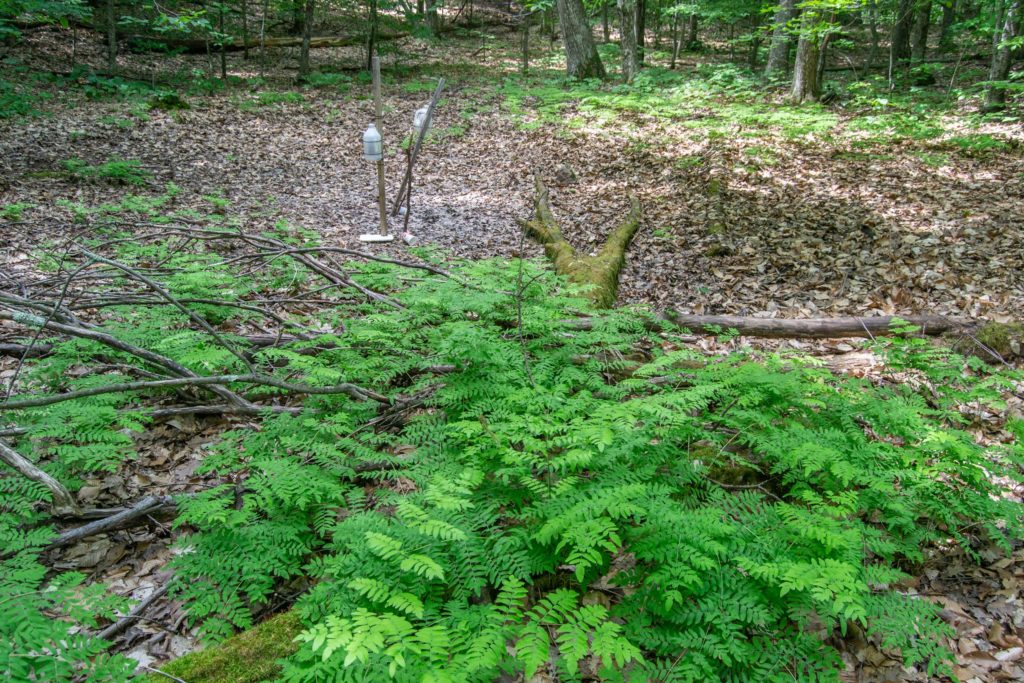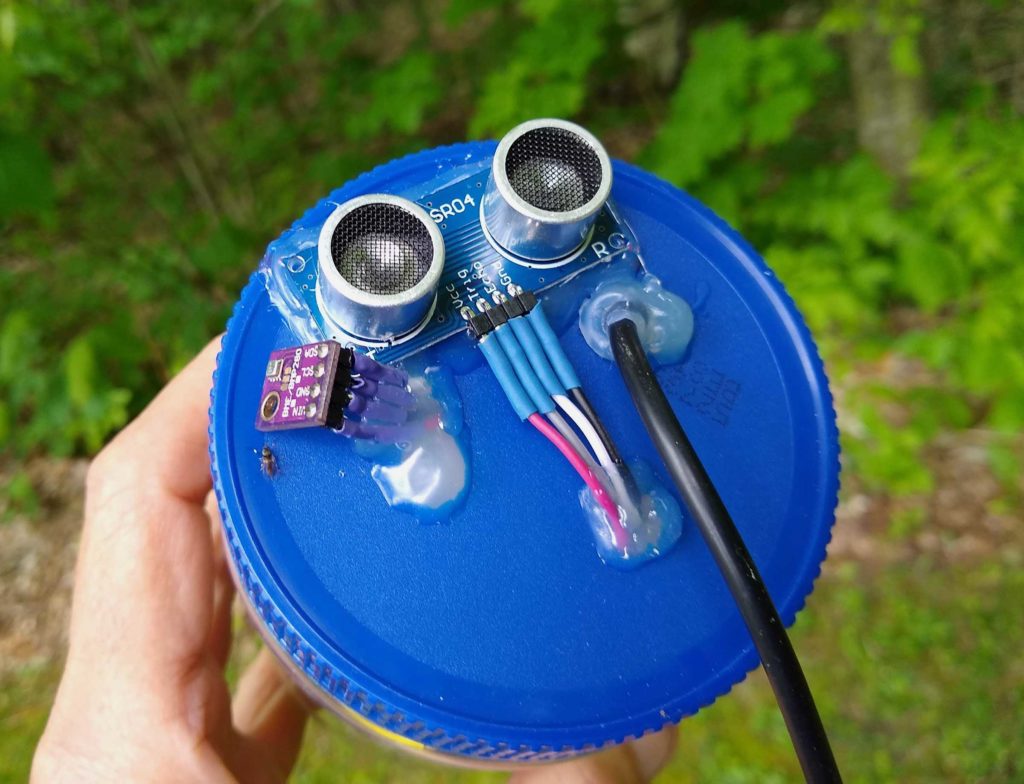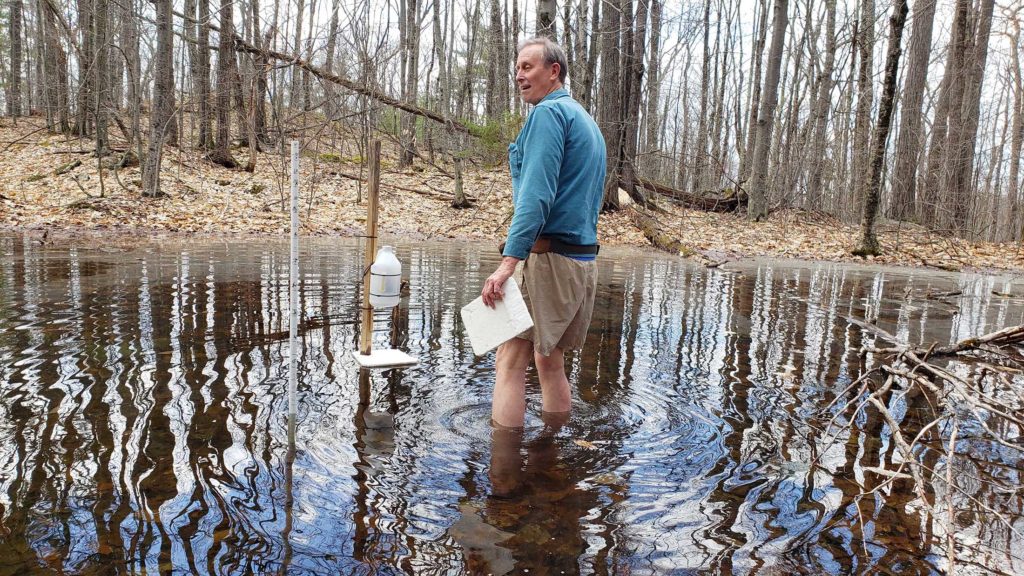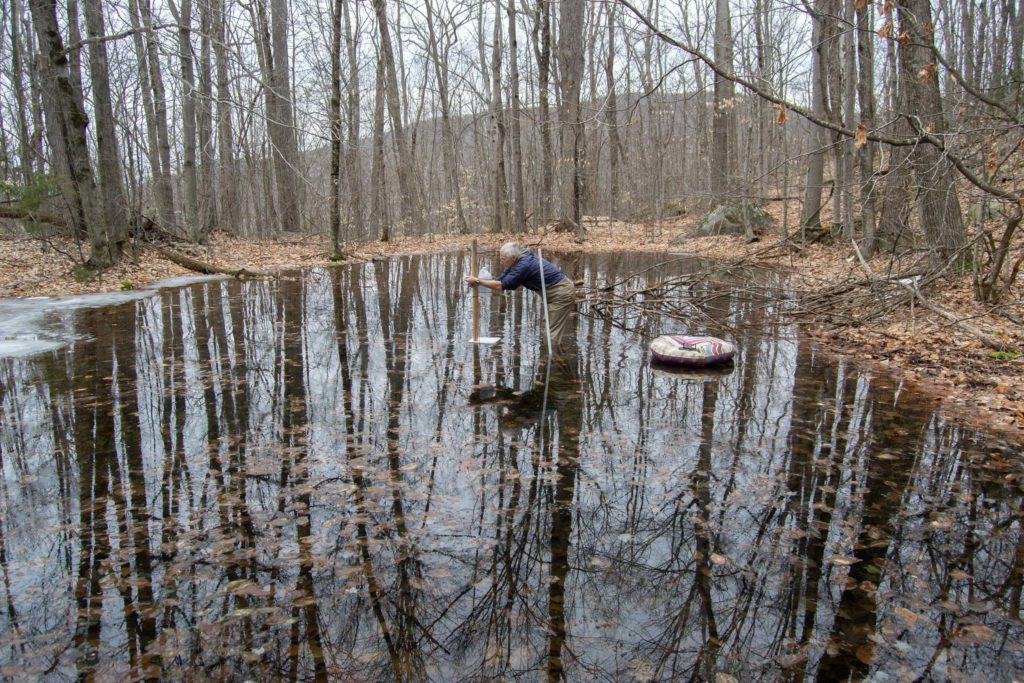The vernal pool we have been monitoring has been dry since about June 17. There were a couple of rainy days in late June, but the puddles formed did not last more than a day. The pool was dry when I visited on July 10, September 29, and October 23. That is, there was no standing water, but the soil under the leaves was always damp. New data from the water depth datalogger indicate that only two rainfall events between June 30 and October 23 produced standing water in the pool.






